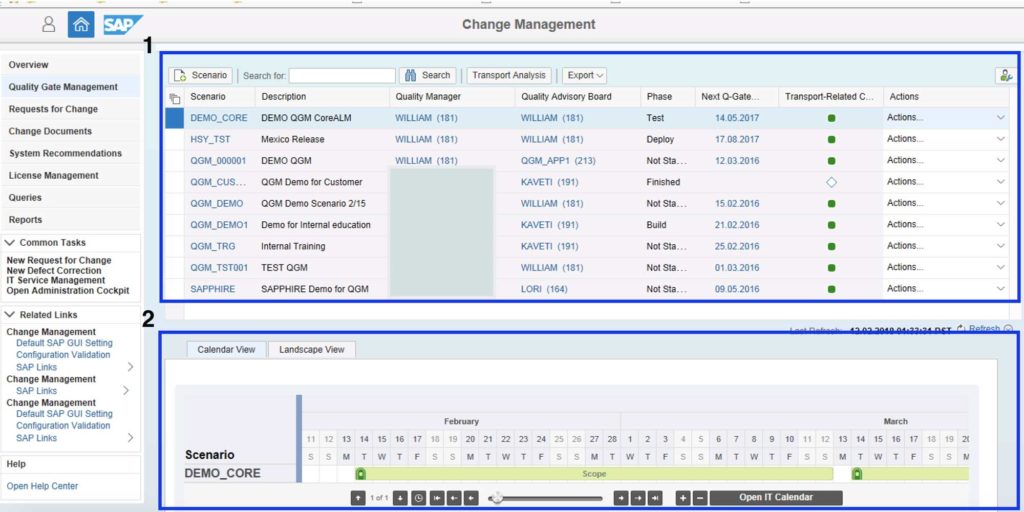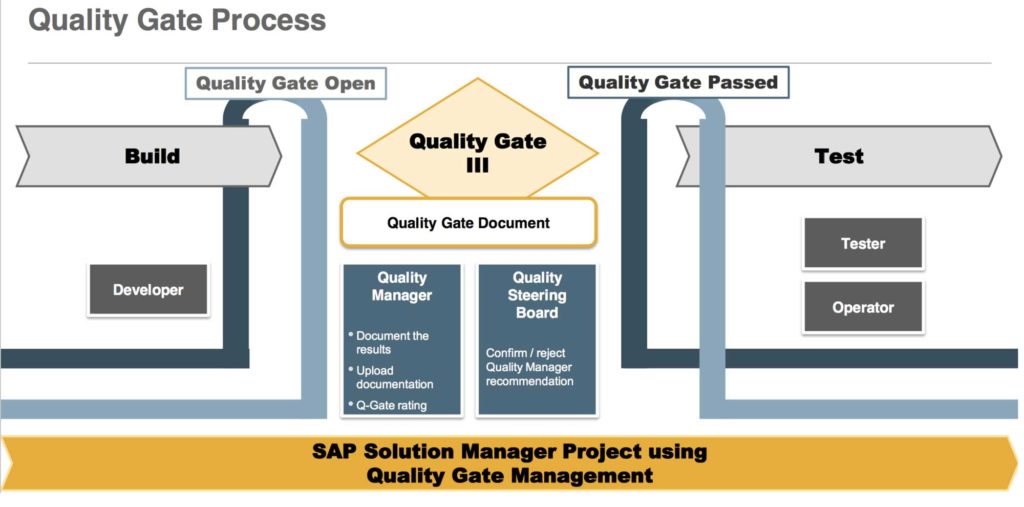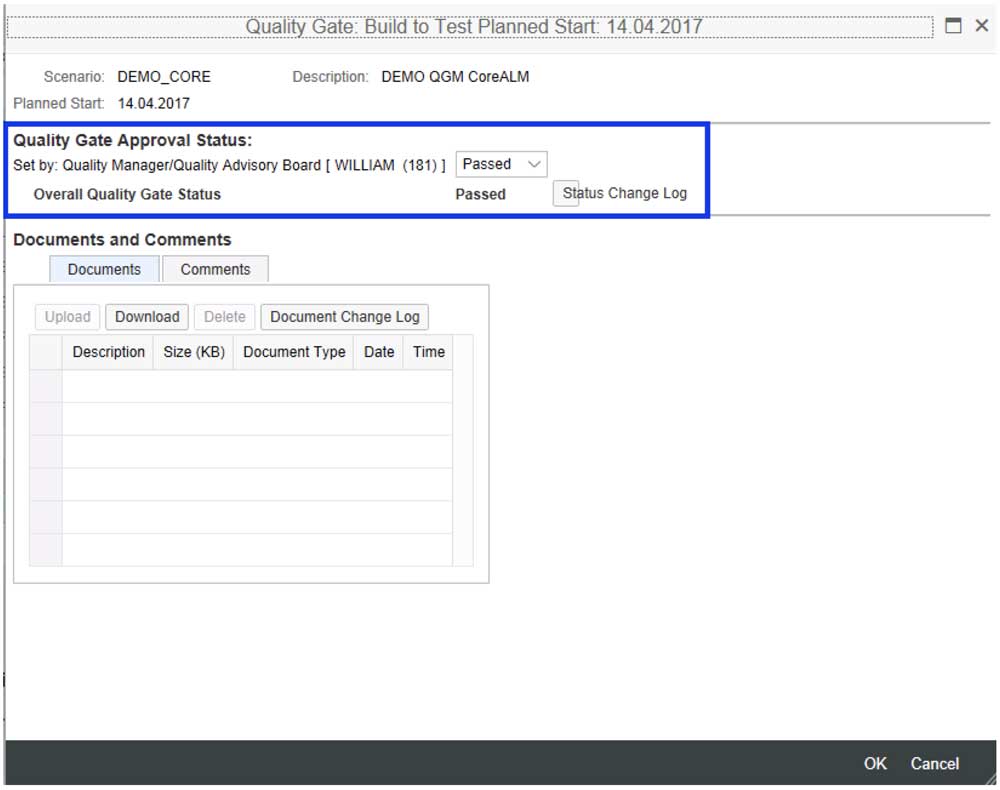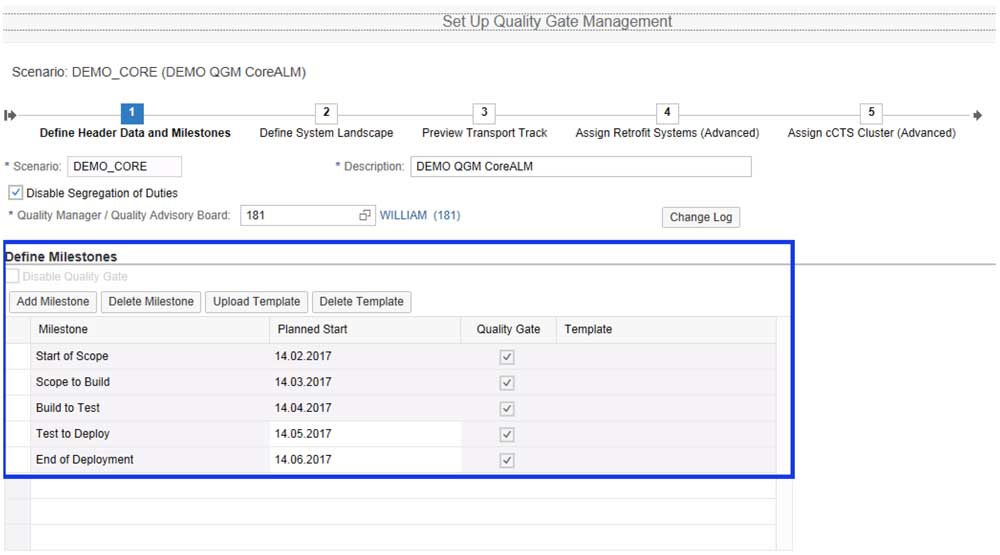
What is Quality Gate Management (QGM) and how to mitigate risks, bring transparency and enable control of your changes
With the release of Solution Manager 7.2, SAP has revamped several applications to provide not only savings to time and money but also able to deliver quality experiences to manage the Application Lifecycle Processes in your organization. One of such application if Quality Gate Management.
Quality Gate Management (QGM) provides an integrated and consistent quality process for managing changes and their deployment over all operational units across the various organizations of a company. This enables you to complete the following tasks:
- Monitor all software change processes and obtain full transparency of these processes
- Use a project-based or release-based approach to distribute software across systems and technology stacks
- Gain an integrated and consistent overview of the implementation of changes to your SAP software solution
Quality gate management combines different software developments into one logical structure. These developments are, in turn, collected in “QGM scenarios”. You can organize and monitor how software is distributed according to individual scenarios or change cycles, as well as the changes made for them.
In this way, quality gate management ensures that all software change processes are fully transparent. It does so by centrally managing the software distribution in complex system landscapes across technology stacks and application components. Technically based on the Change and Transport System (CTS), quality gate management integrates the various development workbenches into one central transport and change control system. It also synchronizes the software distribution in the different software stacks.
Quality Gate Management and SAP Solution Manager 7.2
Quality Gate Management has evolved and improved with Solution Manager 7.2, it now contains a more intuitive interface, which allow End-Users and Change Management to navigate and coordinate deployment easier and faster.
| Scenario | The name of the QGM scenario. If you click the scenario link, the system takes you to the scenario details screen on which you can create changes and transport requests. |
|---|---|
| Description | The description of the QGM scenario |
| Quality Manager | The business partner of the assigned quality manager who sets the first status for the quality gate. By clicking the link, you can navigate to the details for the business partner. |
| Quality Advisory Board | The business partner of the quality advisory board member who sets the second status for the quality gate. By clicking the link, you can navigate to the details for the business partner. |
| Phase | The current phase of the scenario |
| Next Gate | The date on which the next quality gate is due to start. By clicking the link, you can display detailed information about the quality gate. |
| Downgrade Protection |
An indicator that specifies whether the downgrade protection check has been carried out, as well as the number of conflicts identified for the scenario. You can click the link to open the downgrade protection dialog box. |
| Actions | A dropdown list that enables you to perform follow-up actions for the scenario. For example: |
| Set Up Cycle: Enables you to create a new change cycle and edit active change cycles. | |
| Set Up Scenario: Enables you to assign deadlines to quality gates and assign quality gates to systems. | |
| Configuration Check: Enables you to check whether your scenario is configured correctly. | |
| Change CTS Status Switch: Enables you to manually override the standard behavior of the CTS status switch. | |
| Display Application Log: Enables you to view a history of transport-related activities. For more information, see Application Log. | |
| Display Change Log: Enables you to view a history of status changes. |
Features like Retrofit, Transport of Copies, Couple, and Decouple are still supported in QGM.
One of greatest safety features called Transport Related Checks from Change Request management (ChaRM) is also available in QGM; some of the check items used to be part of QGM in 7.1 but now it covers a wider range of checks proving safer deployment across different projects teams.
Transport-related checks include the following checks:
- Cross-system object lock (CSOL) check
- Downgrade protection (DGP) check
- Critical object check
- ABAP test cockpit (ATC) check
- Code inspector check
- Customer-specific check (BAdI implementation)
Quality Gate Management is a great fit tool for customers wishing for more control and transparency of their deployments without having the overhead on process and workflows introduced by “ChaRM”.
Quality Gate Management supports all kinds of methodology. e.g Agile, Activate, Waterfall and etc. QGM is a flexible tool allowing us adjust and customize the different gates and combine that different scenario, cycles and change documents to fulfill and any project design.
Quality gate management controls the flow of software changes using quality gates (“Q-Gates”). A quality gate is a milestone that determines whether changes can be imported into follow-on systems. Only after a quality gate has received the status “passed” can the data be imported into other systems.
By using quality gates, quality gate management provides you with an overview of your scenarios and their statuses. Deadlines can be displayed either graphically or in list form.
Quality gates quickly enable you to obtain an overview of each scenario or change cycle, as well as its status. Within the overview, the time schedule for the different scenarios or change cycles is displayed along with the ratings of any quality gates that have already been passed.
Each QGM scenario comprises four phases: Scope, Build, Test, and Deploy. Each of these phases is separated by quality gates. The quality gates control whether data can be imported into the follow-on systems assigned to the gate. You can import data into a follow-on system only after a quality gate has been passed.
The quality manager and a member of the quality advisory board must approve a quality gate for its overall status to be Passed. Only specified users in a company are authorized to give quality gates the status Passed.
In addition to quality gates, you can specify milestones for your QGM scenario. Like a quality gate, a milestone is the end of a work step, but unlike a quality gate, a milestone does not control whether data can be imported into a follow-on system.
Urgent Changes is now available in Quality Gate management 7.2, it gives you the ability to moving change into production system much faster by reducing the amount gates/approvals.
Conclusion
With the new SAP Solution Manager 7.2 features, Change and Release and Quality Gate Management aims to establish a more flexible toolset and provide increased support for all SAP and non-SAP solutions, however, be aware that Quality Gate Management does not support integration with Change Request Management. They are separate tools but can be used together achieve different requirements and/or methodology. We have a checklist that you can download to see if you are ready to take advantage of these new features.
The Benefits of Using Azure DevOps Connector for SAP Solution Manager Focused Build
Digital transformation is essential in today's business landscape, and SAP S/4HANA has been a game-changer…








